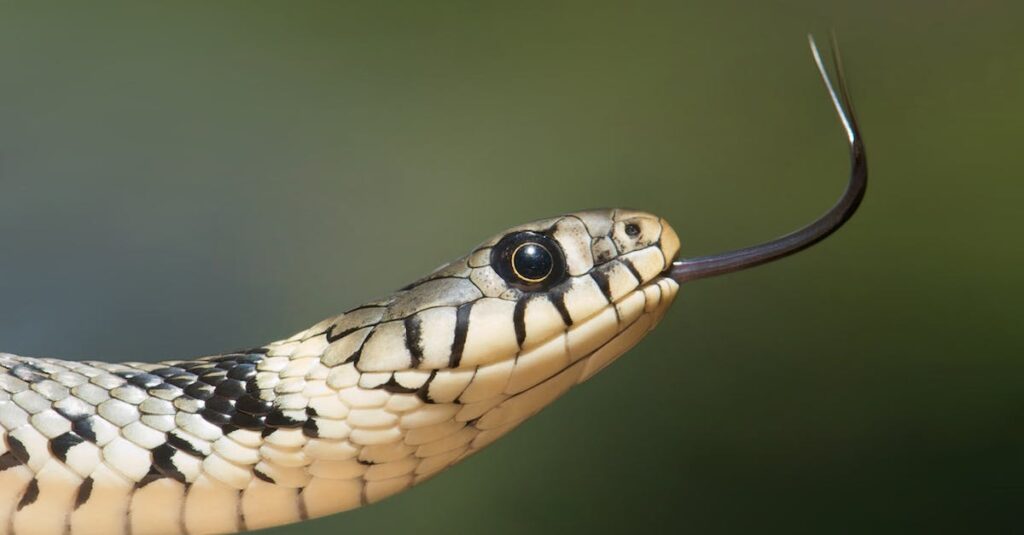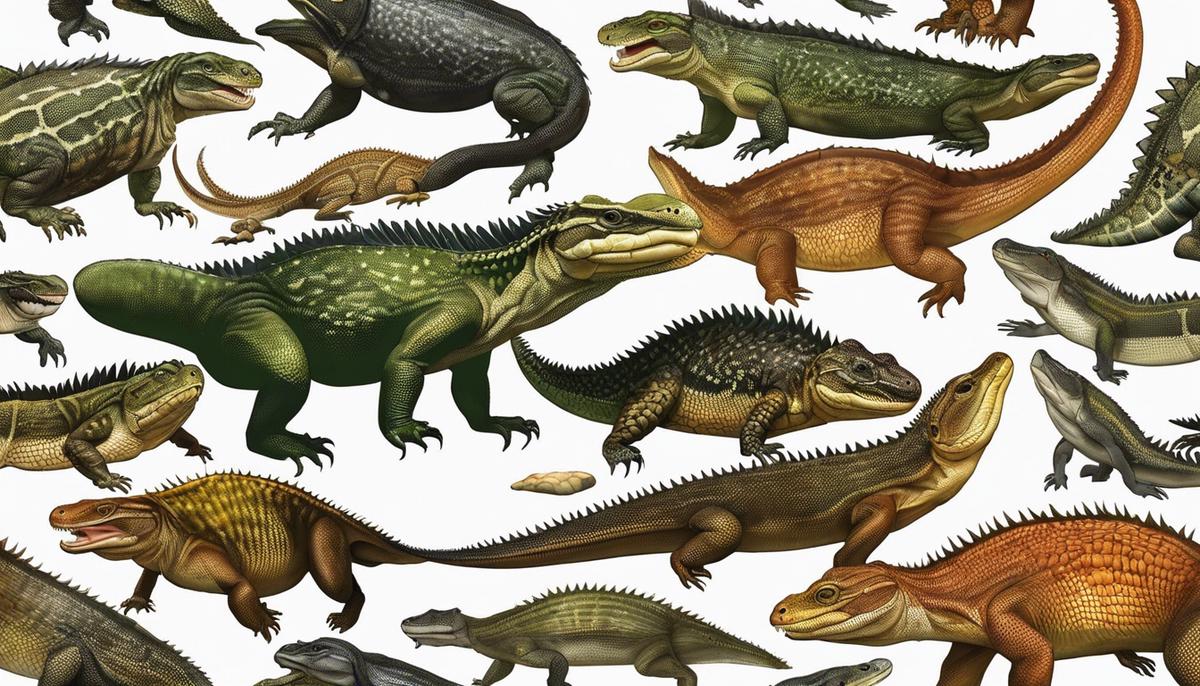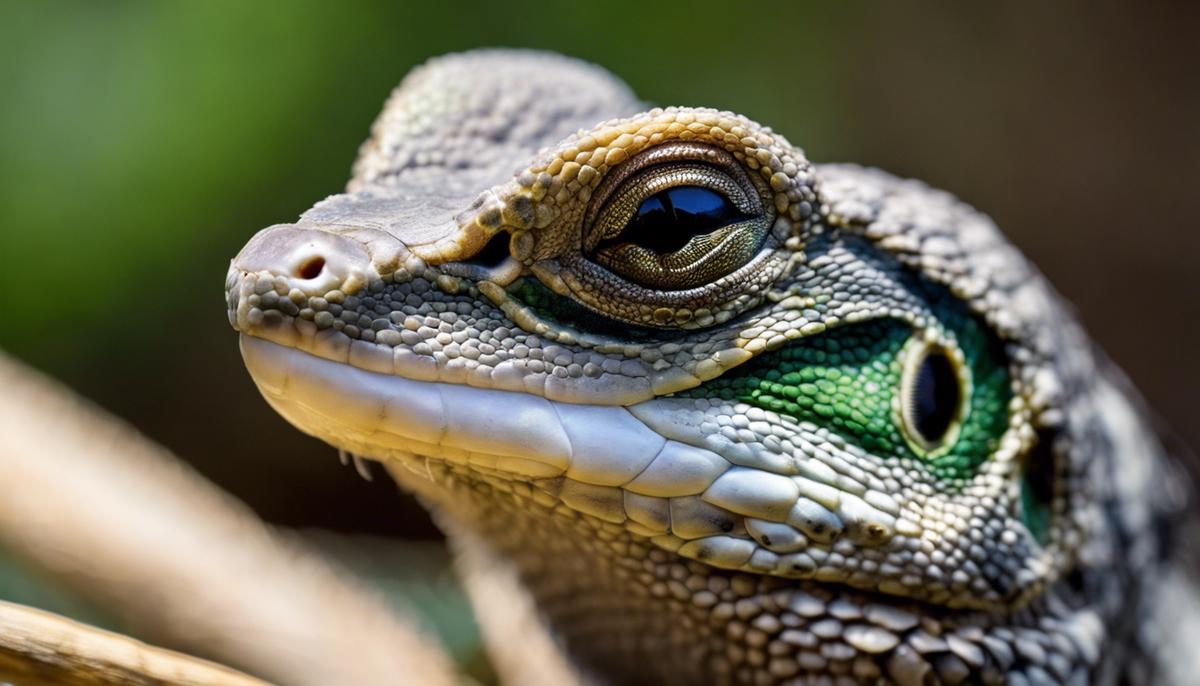Welcome to the fascinating world of reptiles!
Unlike their furry mammalian counterparts, reptiles have a unique and intriguing trait – they shed their skin. This complex process, crucial for their growth and health maintenance, is a marvel of biological engineering, displaying nature’s foresight and survival strategy at its best.
As we delve into the science of reptile shedding, we’ll explore the cellular phenomenon that leads to shedding and draw comparisons between a variety of species—snakes, lizards, and turtles—to provide you with a comprehensive understanding of these creatures and their life-sustaining procedures.
The Science of Reptile Shedding
Have you ever delved into why reptiles shed their skin? Predominantly seen in snakes, lizards, and a host of other reptilian creatures, shedding skin is a fascinating trait and a unique spectacle that arises from the forces of evolution. This article offers a captivating journey into the why, providing a deep dive into the evolutionary mechanisms that underpin reptilian skin-shedding.
First off, remember that reptiles aren’t the only animals to shed their skin. In fact, all animals do it, including you and me! Humans shed skin cells constantly without even noticing. The difference is that reptiles do it all at once, resulting in a striking sloughed-off skin that resembles the reptile itself.
Now, there’s a reason most animals evolved to shed skin continuously and microscopically rather than en masse. For a start, shedding your entire skin at once leaves you liable to dehydration and predation. But reptiles, ingenious as they are, adapted in unique ways that knocked these potential disadvantages on their head.
One thing that made mass shedding more feasible for reptiles was their evolution towards scales. Scales are like a suit of armor, providing valuable protection against enemies and the environment. However, those sharp edges and tight overlaps mean that scales can’t just flake off one by one. Instead, they must peel away in larger sheets.
Most of us have seen how snakes shed, starting from the mouth and slithering out of their old skin, aided by some wriggling, rock rubbing, or dedicated scratching. But where’s the benefit? Well, it’s all about growth!
-

Beaded Dragon Fan Exclusive: ‘Original Hipster’ T-Shirt – Wear Your Unique Style with Pride – Unisex t-shirt
£13.00 – £20.50 Select options This product has multiple variants. The options may be chosen on the product page -

Chinese Water Dragon Aquatic Mastery Tee: Dive into Elegance with Our Exclusive Reptile Enthusiast Shirt – Unisex t-shirt
£13.00 – £20.50 Select options This product has multiple variants. The options may be chosen on the product page
In an evolutionary sense, animals grow by either increasing cell size or cell number. Most mammals adopt the former, growing ‘from the inside out.’ Whether it’s a baby or a broken bone, new cells get added to the interior, letting the organism grow while keeping the outermost layer relatively stable.
But reptiles take a different route – the latter. Their cells don’t increase in size but in number, leading to more scales requiring more skin. But the skin they’re in doesn’t grow with them. Quite the contrary. The old layer becomes sort of a straitjacket, restricting the growth of the shiny new cells underneath. Finally, when the pressure builds up enough, it prompts the release of enzymes that break the bonds between the old and new skin, letting the reptile shed its old skin to reveal the new.
Evolution has refined this process into a biological marvel. The enzymes don’t just separate old skin from new; they also form a protective layer of lymph fluid in between. This fluid aids the shedding process and safeguards the delicate new skin, a clear stroke of evolutionary genius.
Moreover, shedding helps get rid of parasites and rejuvenates the reptile’s exterior, giving them a fresh start every few weeks or months – kind of like a makeover, but with an evolutionary purpose.
Reptiles, therefore, reveal evolution as masterful tinkers, elegantly modifying and rearranging what’s available to suit new needs and create new possibilities. The next time you witness a reptile shed its skin, know that you’re observing a testament to millions of years of survival, adaptation, and evolution. The intricate spectacle of skin-shedding is a natural phenomenon and a poetic testament to the complex beauty and robust pragmatism of life’s constant adaptation.

Shedding Process of Different Reptiles
As we venture deeper into the complex world of reptile shedding, we encounter the fascinating juxtaposition of a shared phenomenon across diverse species yet with unique, species-specific mechanisms. Each type of reptile – be it a snake, a lizard, a turtle, or a crocodile – sheds their skin differently, a reflection of their varied habitats, lifestyles, and evolutionary pathways.
Take lizards, for instance. While we’ve covered snakes’ shedding process, lizards follow a less uniform skin-shedding procedure. These creatures frequently shed in patches rather than one whole piece. Unlike the out-of-sight, secretive snakes, most lizards live abundantly visible lives, and shedding quickly becomes an inefficient method of advertisement to potential predators. As such, they’ve adapted to a patchwork shed, a less conspicuous process that doesn’t invite unwanted attention.
Even within lizard species, shedding varies remarkably. Iguanas and geckos, to illustrate, will often eat their discarded skin. This behavior, initially puzzling to us hobbyists, actually makes sense on a deeper consideration. By consuming their shredded skin, these lizards reclaim valuable nutrients and leave no trace for potential predators – a clear win-win from an evolutionary standpoint.
Moving further along the reptilian family tree, we have the charming turtles. Unlike their snake or lizard cousins, turtles don’t shed their skin in whole or even patches. Theirs is a continual, subtle process where old scutes from the shell and skin flakes are perpetually replaced by new ones. This process, partly due to their aquatic environment, reduces the risks of infection, contributes to maintaining a healthy shell, and ensures optimal growth.
Crocodiles and alligators, as the largest representatives of the reptile kingdom, deserve a special mention. Although they’re well-known for their colossal size and hardy hide, many don’t realize these creatures shed their skin, too! Unlike most other reptiles, however, shedding in these behemoths is less about growth and more about maintaining their renowned armor-like skin. They discard worn-out scales, replacing them with new, tougher ones, hence preserving their formidable exterior.
Species living in diverse conditions have adaptations to their shedding process accordingly. For instance, desert-dwelling reptiles, such as a variety of geckos and snakes, experience a faster shedding process to cope with their harsh, dry environments.
The divergence in shedding patterns across reptile species is a true testament to the sheer complexity and adaptability of these creatures. It underscores the intricate dance between an organism and its environment, delicately choreographed by the invisible hand of evolution, reinforcing the marvel of biodiversity on our awe-inspiring planet.

Identifying and Addressing Shedding Problems
Unveiling Common Reptile Shedding Problems and Their Solutions
While the unique shedding process of reptiles may seem like a perfectly arranged natural phenomenon, sometimes things don’t run quite as smoothly as they should. Numerous issues can halt or disrupt this fascinating process, often to the detriment of your scaly friend. That’s where we, devoted reptile enthusiasts, step into the picture. Equipped with the right knowledge, one can cleverly spot and address these shedding concerns without batting an eyelid.
One of the most typical problems to watch out for is known as partial or incomplete shedding (dysecdysis). This is characterized by leftover, dried-out skin that’s clung to the reptile’s body. This troublesome skin can lead to infections or loss of limbs, especially problematic in snakes or lizards. An immediate alteration in your pet’s habitat can greatly alleviate this issue. Increasing humidity or providing frequent misting can kickstart the shedding, encouraging that stubborn skin to go on its merry way.
Furthering this discussion, the eyes of snakes and geckos also demand attention during shedding. These reptiles possess special ‘spectacles’ or eye caps that shed alongside the skin. In some instances, these caps refuse to shed, leading to a condition aptly termed retained eye caps or spectacles. If not treated promptly, this can ultimately result in blindness. A vet should be consulted at the earliest to safely remove these caps.
Another shedding issue you might encounter is known as mouth rot or stomatitis. This is a serious infection seen among snakes that incurs inflammation and abnormal shedding around the mouth. Apart from trouble shedding, this could also lead to appetite loss in your pet. If noticed, seek an immediate vet consultation, as this condition requires antibiotics for a full recovery.
Similarly, lizards may come down with a condition referred to as metabolic bone disease, leading to poor shedding due to low exposure to UVB light or improper diet. The symptoms include abnormally soft or misshapen bones, leading to difficulty moving or uneven shedding. Again, this calls for a vet’s attention. Modifications to their habitat, diet, or lighting conditions can help prevent such issues in the future.
Turtles, on the other hand, require special attention to their shell health. If you observe any irregular shedding or discoloration in your turtle’s shell, it might be indicative of an infection or parasitic invasion. Again, a quick visit to the vet can help nip this problem in the bud while also learning about better shell care for your turtle.
Remember that the line of action should be swift for all these intricate issues! The natural shedding process of reptiles is usually a swift event – but when it drags on, it’s a clear sign of a struggling reptile. Be attentive to their environment, monitor their dietary intake, and always ensure they have access to the necessary light and heat sources they need.
Each species of reptile has its unique shedding nuances. But, with a keen eye and a proactive approach, you can ensure perfectly successful shedding every time. End of the day, it’s all about giving these mesmerizing creatures a little bit of care and a whole lot of love! So here’s to happy reptile-keeping!

Responsible Reptile Ownership
The hobby of reptile caretaking goes beyond just feeding and cleaning; it’s also about carefully observing and understanding the intricacies of their life processes. One such process is shedding. While the evolutionary advantages and various mechanisms of shedding among different species have already been covered, let’s delve deeper into the role it plays in reptile health and wellbeing and how an owner can enable a seamless shedding cycle.
Shedding plays a powerful role in reptile health, signaling normal growth and development. Yet, complications can occur and have potentially damaging effects on a reptile’s health. One common complication is dysecdysis, or incomplete shedding, where patches of old skin do not successfully peel off. This can lead to infections and limb loss in serious conditions and generally indicate underlying health issues such as dehydration or malnutrition.
Similarly, snakes may sometimes retain their ‘spectacles’ or ‘eye caps’ — the protective scales over their eyes. If not removed, this can result in impaired vision and even blindness. Additionally, non-shedding of the old skin around a reptile’s mouth can potentially result in stomatitis or mouth rot, a painful condition for snakes. Lizards may suffer from metabolic bone disease if a poor shed is coupled with an inadequate supply of UVB light and dietary calcium.
Turtles, too, have unique shedding concerns. They shed scutes, or sections of their shells, as part of their growth. If these scutes retain too much moisture, mold can develop, leading to shell rot. Hence, it’s crucial to maintain a clean and appropriate environment to encourage healthy shedding.
So, how can owners facilitate a healthy shedding cycle?
Overly dry environments can hinder the shedding process, while overly moist environments can promote bacterial growth. Keeping the environment correctly lit, preferably with UVB lights that mimic natural sunlight, ensures lizards receive adequate amounts of vitamin D3, which is crucial for calcium absorption and overall well-being.
Secondly, diet is a determinant factor. A balanced diet with enough vitamins and minerals aids in successful, healthy shedding. Calcium, in particular, can prevent conditions like metabolic bone disease in lizards.
Lastly, ensuring the reptile has access to objects to rub against will facilitate the shedding process. They use such surfaces to start the ‘peel’ and ease the old skin off.
It’s important to remember each reptile species possesses unique shedding characteristics and challenges – knowledge that owners should equip themselves with. The intricate process of shedding reveals not just the deep-seated power of evolution but also showcases the resilience and adaptability of these wonderful creatures. In the path of reptile caretaking, understanding and facilitating this process with love and care is what truly transforms it from a hobby into an enriching experience.

Being a responsible reptile owner entails understanding your pet at a physiological level. By getting to grips with the intricacies of shedding and knowing how to ensure it’s a smooth process for your pet, we demonstrate true respect and care for these unique creatures. Remember, the prize of responsible ownership is the thriving health and contentment of your pet, and nothing showcases this better than flawless, periodic skin shedding. Your newfound expertise in understanding, identifying, and addressing shedding problems – thanks to this deep dive into the world of reptiles – will undoubtedly make you a more compassionate and informed pet owner.

